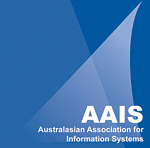Based on the experience of service provision in the Australasian IS Ecosystem, a model can be specified that consists of three levels of abstraction: infrastructure- policy framework- governance context; the so-called IPG Model. The governance context includes governance arrangements, capabilities/resourcing and responsibilities. The policy framework consists of policies, standards and guidelines. Finally, infrastructure deals with issues of the suitability of technologies, planning, auditing, and quality assessment; see figure below.

AAIS IPG Model
Each of these levels is necessary. Policy frameworks (or the lack of them) are developed (or not) in a specific governance context. A lack of a policy framework would mean that specific infrastructure would not be developed appropriately or could not be effectively used.
Changes to any one of these levels due to decision-making within or between entities that help form the Governance Context within the Australasian IS Ecosystem may produce effects contained to one level or more levels in the IPG Model. These effects or disruptions are shown as arrows; see (a) below. While there are bidirectional influences between these levels of abstraction, they also sit in a more complex hierarchical relation with each other. A given policy framework forms the context in which infrastructure plays out. However, a given policy framework gets played out against a backdrop of established governance arrangements that form its context; see (b) below.
The AAIS uses the IPG Model to help clarify the kinds of deliverables that are needed and also the kinds of activities and services to be provided in order to best serve the Australasian IS Community.
(a) Bi-directional Influences (b) Contextual Relations


